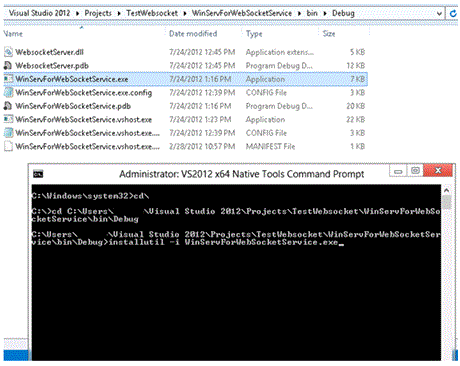
Unfortunately, as of Visual Studio 2012, Microsoft has deleted the 'Setup Project' built-in feature of Visual Studio, in a move which I opine was a nod to their long-time business partner, InstallShield (owned by Flexera software). They removed this feature because they wanted to direct their customers to use hideously expensive third-party software to graphically build Windows Installers using InstallShield.
I will demonstrate the easiest way of installing a Windows service. Using the InstallUtil.exe had been my primary mechanism of installing a Windows service until I. Here Mudassar Ahmed Khan has explained to install and uninstall Windows Service using InstallUtil.exe utility from Command Prompt (Line) in C# and VB.Net. I have a standard.NET windows service written in C#. Can it install itself without using InstallUtil? Should I use the service installer class? How should I use it? How can the answer be improved?
Important In some cases, parameters passed to the installer may include sensitive or personally identifiable information, which, by default, is written to a plain text log file. To prevent this behavior, you can suppress the log file by specifying /LogFile= (with no filename argument) after Installutil. Cricket 2005 Pc Game Full Version. exe on the command line. Remarks.NET Framework applications consist of traditional program files and associated resources, such as message queues, event logs, and performance counters that must be created when the application is deployed. You can use an assembly's installer components to create these resources when your application is installed and to remove them when your application is uninstalled. Installutil.exe detects and executes these installer components.
You can specify multiple assemblies on the same command line. Any option that occurs before an assembly name applies to that assembly's installation. Except for /u and /AssemblyName, options are cumulative but overridable. That is, options specified for one assembly apply to all subsequent assemblies unless the option is specified with a new value.
If you run Installutil.exe against an assembly without specifying any options, it places the following three files into the assembly's directory: • InstallUtil.InstallLog - Contains a general description of the installation progress. • assemblyname.InstallLog - Contains information specific to the commit phase of the installation process. For more information about the commit phase, see the method. • assemblyname.InstallState - Contains data used to uninstall the assembly. Installutil.exe uses reflection to inspect the specified assemblies and to find all types that have the attribute set to true. The tool then executes either the or the method on each instance of the type.